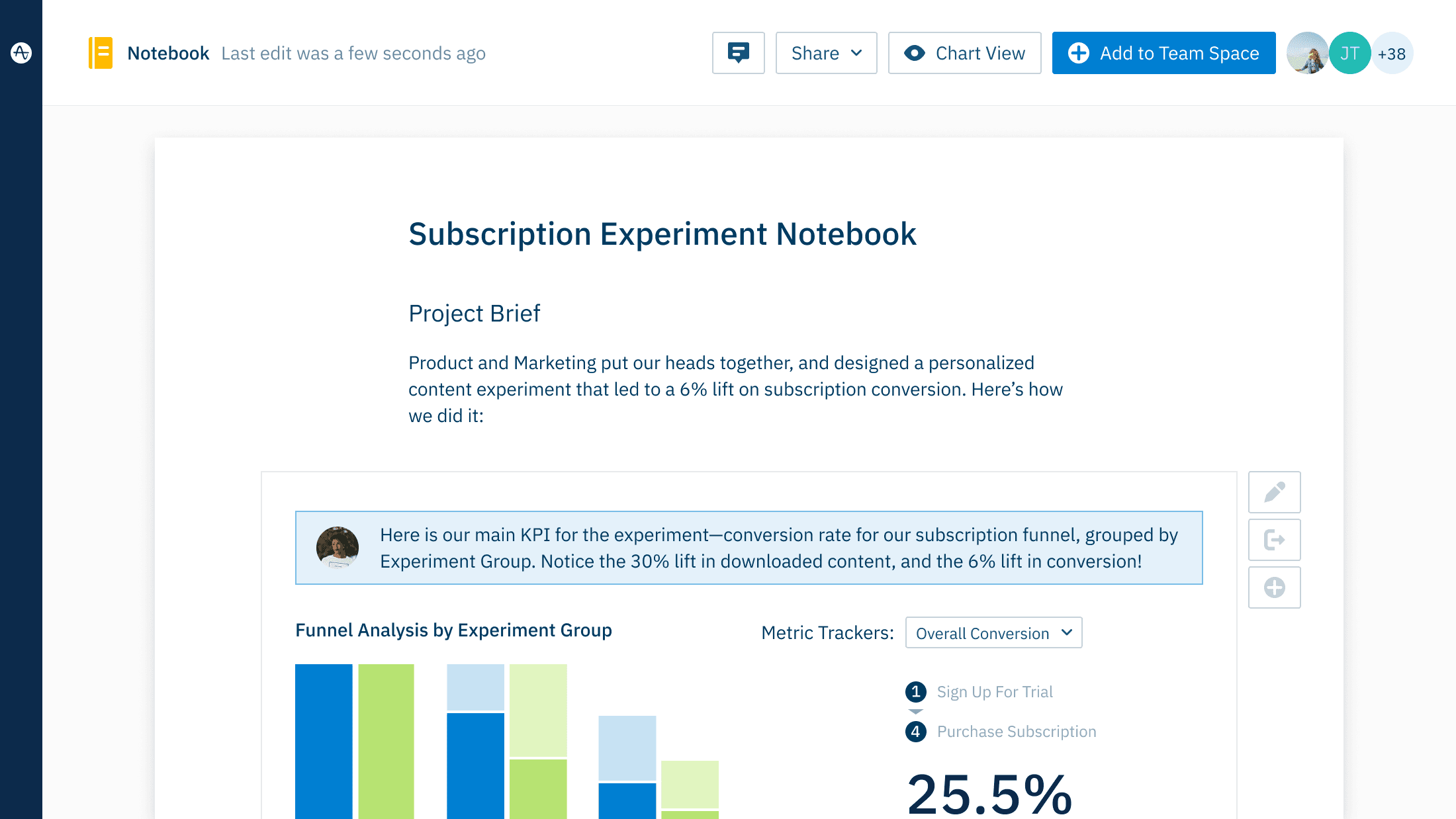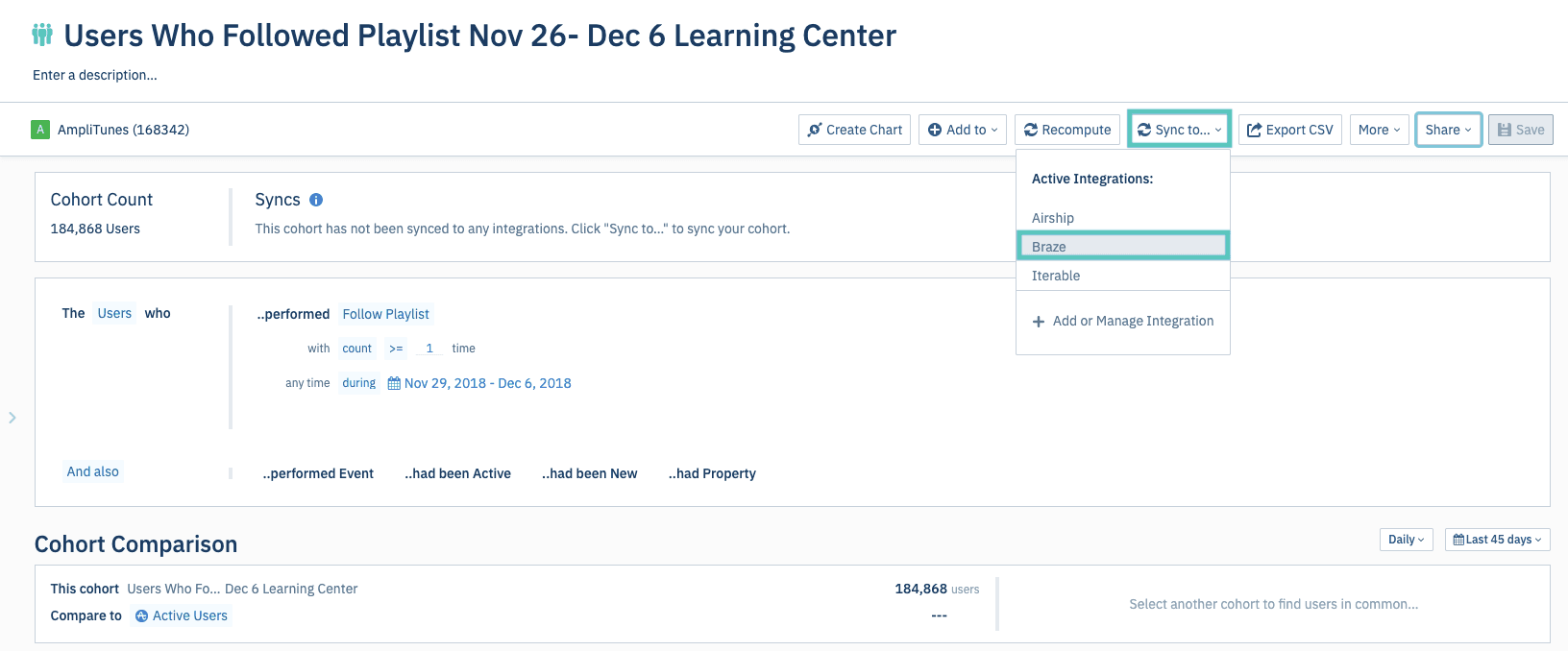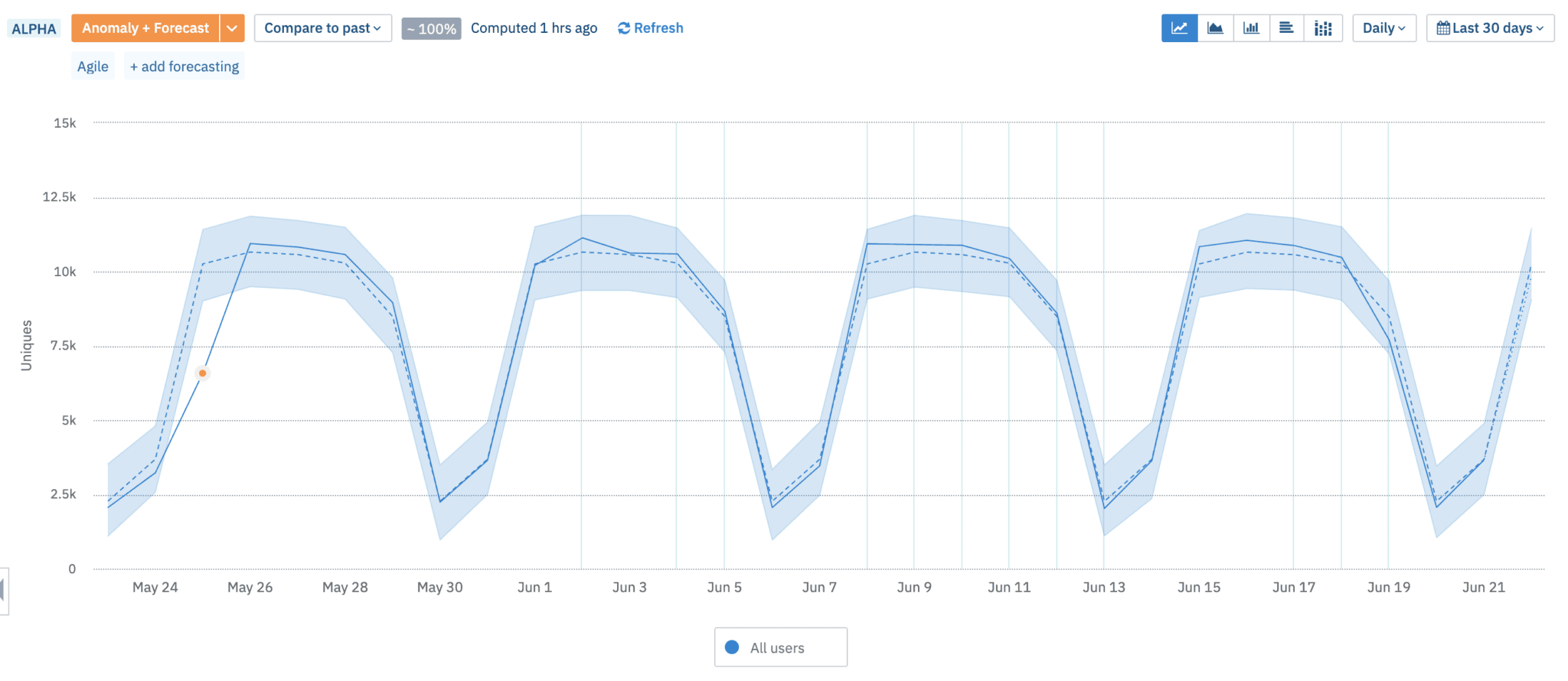5 Uses for Product Analytics in Marketing Management
How marketers can use product analytics to improve how they communicate with potential customers
Each month, high-level KPIs such as marketing qualified leads and conversion rates feature prominently in marketing stakeholder reports. But for marketers, the real value is in tracking and analyzing granular user behavior throughout their marketing management tools. It’s these product analytics that help marketers implement the small changes in their campaigns to meet those KPI benchmarks.
In short, seeing and acting on user behavior data is what makes those reports look good.
Product analytics gives marketers context to their metrics so they can better understand what their customers want and modify their campaigns in order to fulfill those customer desires.
1. Showcase Behavioral Cohorts, Not Just KPIs
As customers move through a platform, they leave behind hundreds of data points. It’s easy to get lost in the sheer amount of information. But by analyzing a group of customers based on their behavior, or behavioral cohorting, marketers can identify patterns in user behavior that they want to replicate.
With behavioral cohorts, marketers can tailor the channels and campaign messaging most likely to lead to the high-level KPIs that stakeholders want to see. For example, a marketer who wants to increase conversion rates can create a segment of customers who moved from a free trial to a mid- or top-tier paid plan. By analyzing this cohort, the marketer can see which messages these users were most likely to engage with and apply those messages across campaigns to drive higher conversion rates.
Identifying the behavioral cohorts is the first step. Marketers also need to interpret the data and communicate their findings with team members. With a product analytics tool like Amplitude, marketers can easily visualize the cohorts and behaviors with dashboards. Notating these charts with a feature like Notebooks provides stakeholders the additional context on how this data applies to the KPIs.

Adding context to a report with Notebooks
2. Integrating Cohorts with Marketing Automation Tools
Behavioral cohorts are valuable for marketers outside of the product analytics platform as well. Many tools within a typical marketing management stack allow marketers to integrate cohorts. This allows marketers to personalize customer and lead messaging based on user behavior.
Marketers can use cohorts in platforms that use look-alike audiences. Integrating cohorts into social media apps such as Google Ads and Facebook allows marketers to bring users into the funnel that have the same characteristics as those in the cohort. For example, a marketer can create a cohort of users who log in to their platform at least three times a week. Using that cohort, the marketer can target similar profiles on Facebook and Google Ads to draw in customers who would likely find the platform valuable as well.
Cross-channel marketing platforms, such as Braze and Iterable, allow marketers to automate their communication across channels such as in-app notifications and email campaigns. In their product marketing platform, marketers can identify segments based on user behavior, such as those who downloaded a whitepaper but haven’t signed up for a free trial. Uploading or syncing that segment into these platforms, marketers can then tailor messaging across channels to increase the number of qualified leads. These integrations make experimentation seamless by passing information back and forth so small changes can be analyzed and customer information stays current.
Fishbrain, a mobile photo-sharing and social networking service for anglers, wanted to increase retention and user engagement. Studying user behavior, they were able to identify key moments that drove user retention. The team synchronized the experiment cohorts and control groups between Braze and Amplitude and compared campaign effectiveness on driving retention. With this continual iteration, Fishbrain saw a 50% increase in week six retention over those users who were in the control group.
3. Discover Meaningful Outliers
Staying on top of trends can help marketers get ahead of a change in the market. But misreading a data point can mean wasted resources. Product analytics help marketers know whether a data outlier is a blip or a change in customer preferences that they should incorporate into campaigns and messaging.
Using features such as Anomaly and Forecast, marketers can clearly see where data points don’t align to past results. Marketing teams can compare this data to other metrics and business contexts to understand the trends.
For example, Care.com might notice an unusual demand for tutors. By looking at other business metrics, this demand might follow changes in the dates for the ACT. Or it might signal a shift in more families wanting small-group learning environments. Having this information helps marketers stay agile in their messaging and get ahead of behavior changes.
For local marketplace app letgo, understanding trends helps the team anticipate potential opportunities that can impact their KPIs. Anomaly reports help them get context on these outliers, such as how bank holidays affect when users post items to sell.
4. Find Missed Opportunities in User Journeys
Every marketer knows their marketing funnel has leaks. The trick is identifying where those leaks are and finding ways to bring qualified leads back into the funnel. Product analytics provides granular details on user behavior so marketers can find ways to re-engage users who didn’t convert.
Sometimes a simple source of friction can cause users not to purchase. Using product analytics tools such as Funnels, marketers can understand what users did instead of converting. Did users drop off halfway through the sign-up form? Did they click through the email CTA but didn’t seem to know what to do next? With these details, marketers can remove hurdles for conversion throughout their marketing management stack and make it easier for customers to get what they want.
Food delivery service Instacart had a leaky funnel. One of the company’s KPIs was increasing activation. But throwing more people into the funnel wasn’t going to solve their problem. They needed to understand why the people who made it to their site weren’t placing an order. Using product analytics, their Growth Team was able to identify where people were dropping out of their onboarding sequence. Through a series of A/B tests, they were able to experiment with the landing page and sign-up process to make onboarding easier. Ultimately, they saw a 10% increase in their conversion rate.
5. Take Action on Insights
Many marketing teams have to request data through BI groups and analysts, waiting days or even weeks for reports. In those weeks, campaigns have been sent, and customers have signed up (or not), making the data less and less applicable. Having accessible, real-time data at their fingertips means marketers can move quickly on opportunities they find.
While the intersection of data analysis and marketing continues to grow, marketers shouldn’t need to know how to build SQL queries to understand the results of an A/B test. They should be able to create a few reports and see in real-time how different messaging options affect user behavior. A product analytics solution like Amplitude provides accessible and real-time data that marketers can use to improve their campaigns.
Prior to implementing Amplitude, the Under Armour Connected Fitness team worked through their BI department for user analytics. Understanding the results from experiments typically took up to three months, which made it difficult to move quickly on their findings. With tools like segmentation, funnels, and A/B testing, the team was able to cut that experimentation time from three months to one. The team was able to take action on their insights faster, discontinuing ineffective campaigns and doubling down on ones that worked.
Implement Effective Marketing Management
Having granular and actionable data on user behavior doesn’t just impact marketing initiatives. It can also help marketers make smarter decisions about the tools they use to launch those initiatives. Product analytics empowers marketers to make data-driven decisions about the tools in their marketing management tech stack. Through experimentation, marketers can evaluate a tool based on its ability to drive real customer value and tangible results.
Ready to see how a product analytics solution like Amplitude can help your marketing team? Get a personalized demo to learn more.

Maria LaBrutto
Principal Customer Success Manager, Amplitude
Maria LaBrutto is a principal customer success manager at Amplitude, where she works with digital-first teams—from product to marketing—to help them understand customer behavior and use those insights to drive retention, engagement, and growth.
More from Maria






